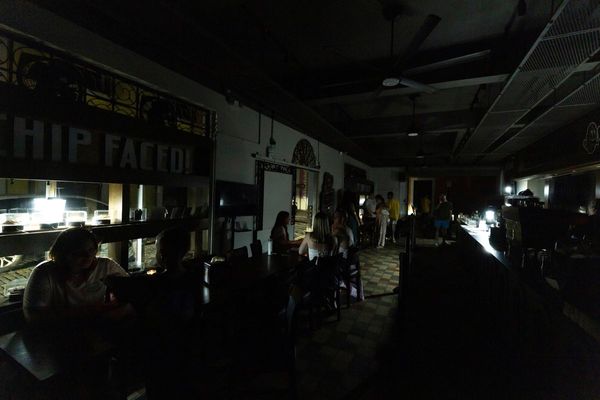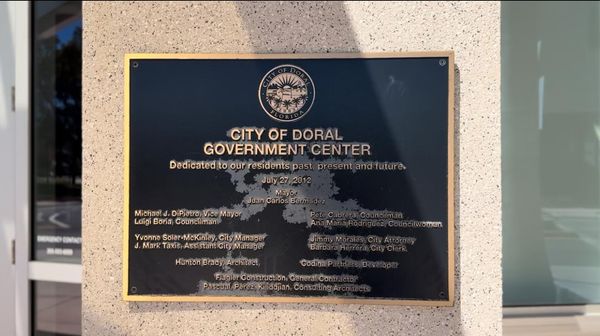
When Hulu announced plans to release a documentary on Freaknik late last year, the news landed more like a threat. “Freaknik aunties are shook,” read one Revolt TV headline. TMZ reported that an “older generation of ragers” was ”freaking out”. One TikToker who claimed to have attended several of the spring break festivals during its 90s heyday captured the prevailing mood among her peers. “I dunno, y’all,” she sighed, “we might be in trouble.” There was a genuine fear that rewinding the tape from that time could eviscerate the Black bourgeoisie, embarrassing scores of career professionals and public figures if the unearthed footage didn’t outright end their careers. A judge and politician were among five women who sued to stop the documentary from airing.
P Frank Williams, the director on the project, could relate. “Not to say people overreacted,” he says. “But the whole ‘people getting up in arms’ was a little bit funny and a little bit crazy at the same time. Ultimately, in the film, we tried our best to show that it was a fun, partying kind of time, but there were also a lot of cultural things that were going on as well.”
The resulting documentary, Freaknik: The Wildest Party Never Told, should set those initial concerns at ease while seizing on the voracious appetite for 90s nostalgia. The 82-minute film, which premiered at SXSW earlier this month, is less of an homage to BET’s Uncut era than a measured and balanced look back at the spring break festival that attracted scores of Black students to Atlanta during the 80s and 90s, playing a key role in establishing the city as a cultural hub and thriving community for an upwardly mobile Black class.
Freaknik had come and gone by the time I was of college spring break age, and seemed a world away from me in the midwest. But the festival T-shirt I once scored from a local thrift shop did make me wonder. It featured cartoon partiers and one of the all-time great taglines – “Freaknik: get in where you fit in”. Twenty-some years later, here I am in Atlanta raising a family. It’s no coincidence. “I love your story because I think it’s a perfect example of the reach and cultural impact that Freaknik had,” says showrunner Geraldine Porras, too young to have attended the festival as well. “You had people who were coming from all over the country because they knew about Freaknik.”
Altogether, Freaknik only ran for 16 years, from 1983 through 1999. The film does an admirable job of unpacking this history with the Washington DC college kids who dreamed up the gathering for fellow peers who were likewise stranded during spring break with nothing to do. So they organized a picnic, starting at Atlanta’s Piedmont Park before moving to the grounds of the Atlanta University Center Consortium, the quadrangle that binds the historically Black colleges of Morehouse, Spelman and Clark Atlanta University. The event title was just a portmanteau that combines picnic with Le Freak, the Chic-coined disco hit that was all the rage at the time and set the freeing tone. It wasn’t long thereafter, Freaknik co-founder Emma Horton recalls in the film, that Black college students went from “can’t go home to don’t wanna go”.
As word spread and the crowds swelled into the hundreds of thousands, Freaknik evolved into a cultural bazaar for fashion trends, dance crazes and spring flings – a vibe that was soon captured in the music of local hip-hop impresario Jermaine Dupri and dispersed around the country by festivalgoers. It wasn’t until Luther Campbell came on scene in 1993 that the DC kids’ picnic turned into a more hedonistic affair, one that had camcorder-wielding onlookers zooming in to check out the girls in the Daisy Dukes who reciprocated the ogling. To watch the mutual admiration is to be transported back to a time when there wasn’t “the pressure from social media to have a perfect body or drive a nice car”, says Williams, who did attend the festival in the 90s. It turns out, those kids got along fine carpooling in minivans and Geo Trackers – although not nearly enough to ease the massive traffic jams and keep the sprawling party from spilling on to the highways. The whole city was a safe space.
Perhaps the most important point the film makes is why such a gathering was needed in the first place – because Black spring breakers weren’t especially prevalent on white Florida beaches. Among other talking heads, the Atlanta rapper Rasheeda (of Love & Hip Hop fame) provides keen insight into the local scene and its gender politics, and landing Killer Mike was a huge coup. But by far the doc’s biggest get was the hours of home video that partygoers gave up to reconstruct the time. “A lot of folks just had the video on DVD or VHS or Hi8 tapes sitting in their garages collecting dust,” says Porras, adding that it was Dupri and Campbell who coaxed festivalgoers into submitting their footage. “It created an excitement, and word of mouth started to spread all over again. But of course we also had to sift through all the footage because there’d be Freaknik shit along with, you know, the family cookout or something on the same tape.”
If anything, the hoarding underscores a key difference between this generation and that one – the one that came just before Girls Gone Wild became a thing we capture on video for the world’s consumption, while they captured it for their own. On a recent episode of his Nightcap podcast, the NFL great Shannon Sharpe flashed the handheld he carried with him for his five Freaknik trips in the 90s. “If y’all break in the house,” he joked, “you’ll never find it. This goes right back to the vault. Right back to the bank vault.”
Also caught on tape in the doc are snippets of the well-documented instances of sexual harassment and assault – a subject area early skeptics of the Freaknik doc thought might wind up excluded. It hardened the mainstream image of Freaknik as a rager without rules as Atlanta was smartening up to host the 1996 Olympics. Something had to give. And while Freaknik has been rebooted here and there – the rapper 21 Savage made it his 30th birthday party theme – if the doc makes anything clear, it’s that nothing will ever come close to the original bash.
“I think there’s nostalgia because there’s a sense of freedom that the social media age of today doesn’t give you,” Williams says. “Imagine if 300,000 people were in the streets of Atlanta in 2024. Nobody’s stepping on shoes, nobody’s getting shot – just people in the moment having fun. Freaknik is just one of the biggest things that ever happened from a Black cultural perspective.”
Freaknik: The Wildest Party Never Told is now available on Hulu in the US and Disney+ elsewhere







